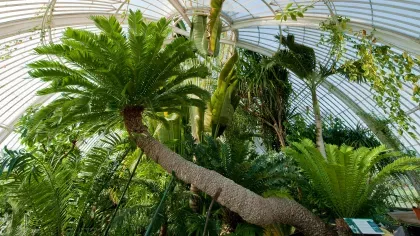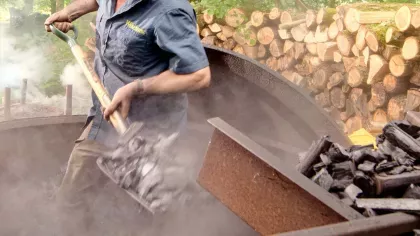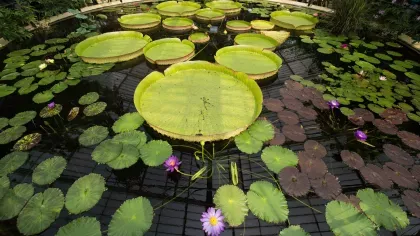1 August 2019
Secrets of the Waterlily House
Fascinating little-known facts about our hottest glasshouse, from Waterlily House Botanical Horticulturist Solène Dequiret.

Record-breaking width
The Waterlily House opened in 1852, designed by Decimus Burton and constructed by Richard Turner. At the time of its opening, the Grade II listed building was the widest single-span glasshouse in the world.
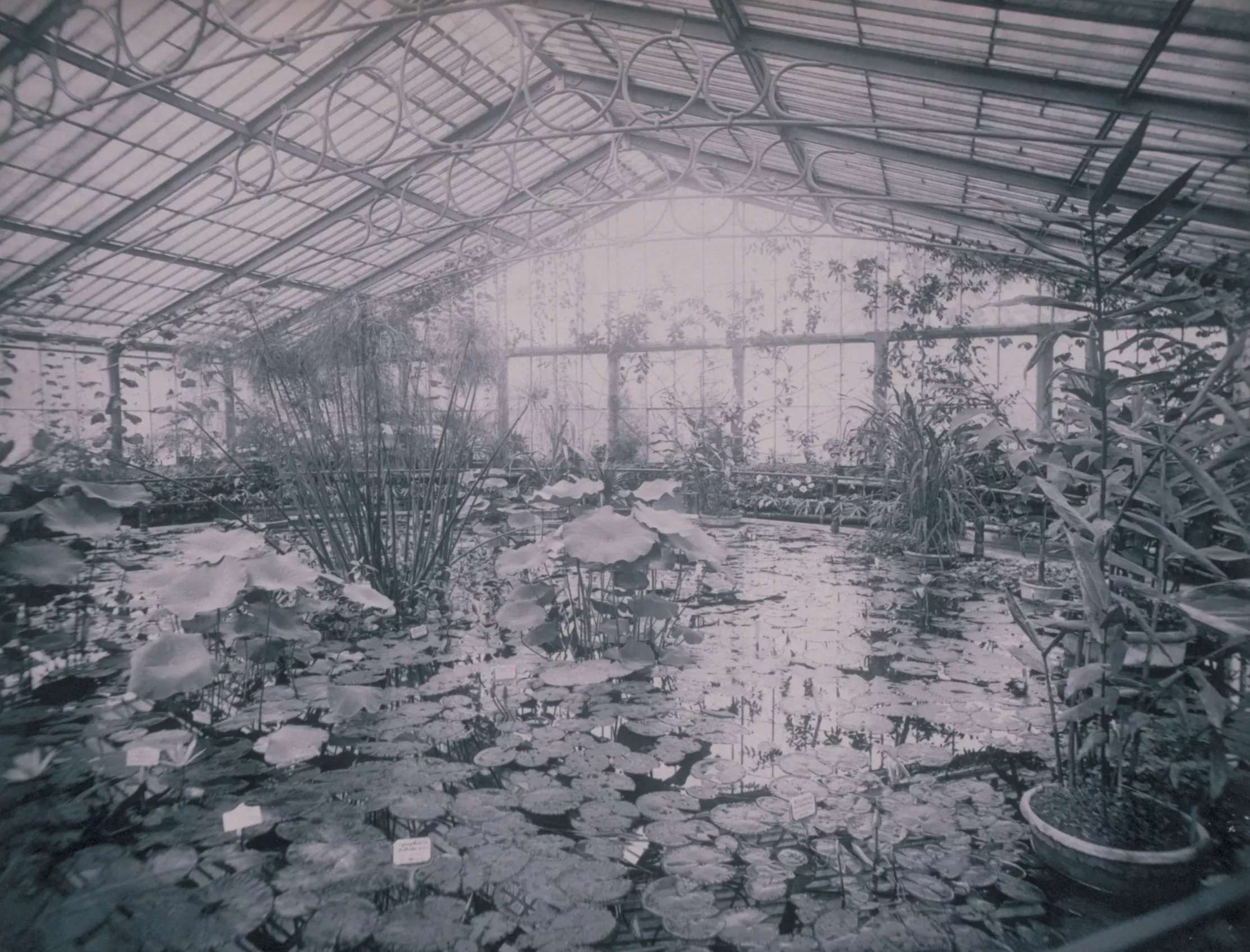
Amazing Victoria amazonica
Our tropical glasshouse was originally built to house the natural wonder of the Victorian age, the giant waterlily (Victoria amazonica).
Named after Queen Victoria, it’s the largest of all waterlilies with huge circular leaves that, incredibly, are strong enough to support the weight of a child.
Nowadays in the Waterlily House, you’ll find the Santa Cruz waterlily (Victoria cruziana) which is grown from seed every year, along with other waterlily species, the sacred lotus (Nelumbo nucifera) and tropical aquatic plants.
Our Victoria amazonica now lives in the Princess of Wales Conservatory.
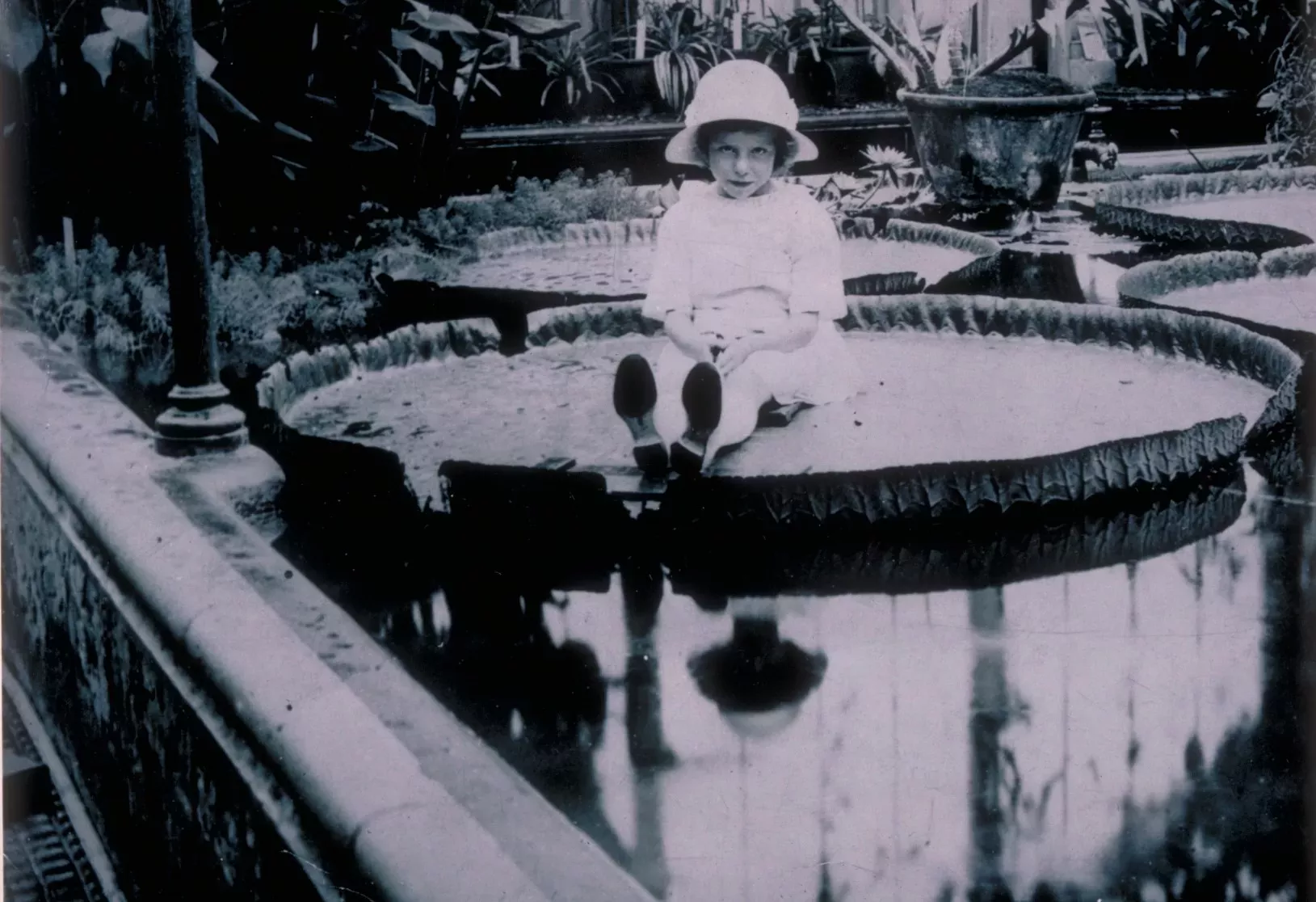
The smallest waterlily in the world
The world’s smallest waterlily, Nymphaea thermarum, is extinct in the wild. But more than 50 of these pygmy plants are growing here at Kew, including in our Waterlily House.
The species, originally only found in Rwanda, was saved from complete extinction in a conservation effort by our horticulturists, who figured out how to propagate the plant in 2009.
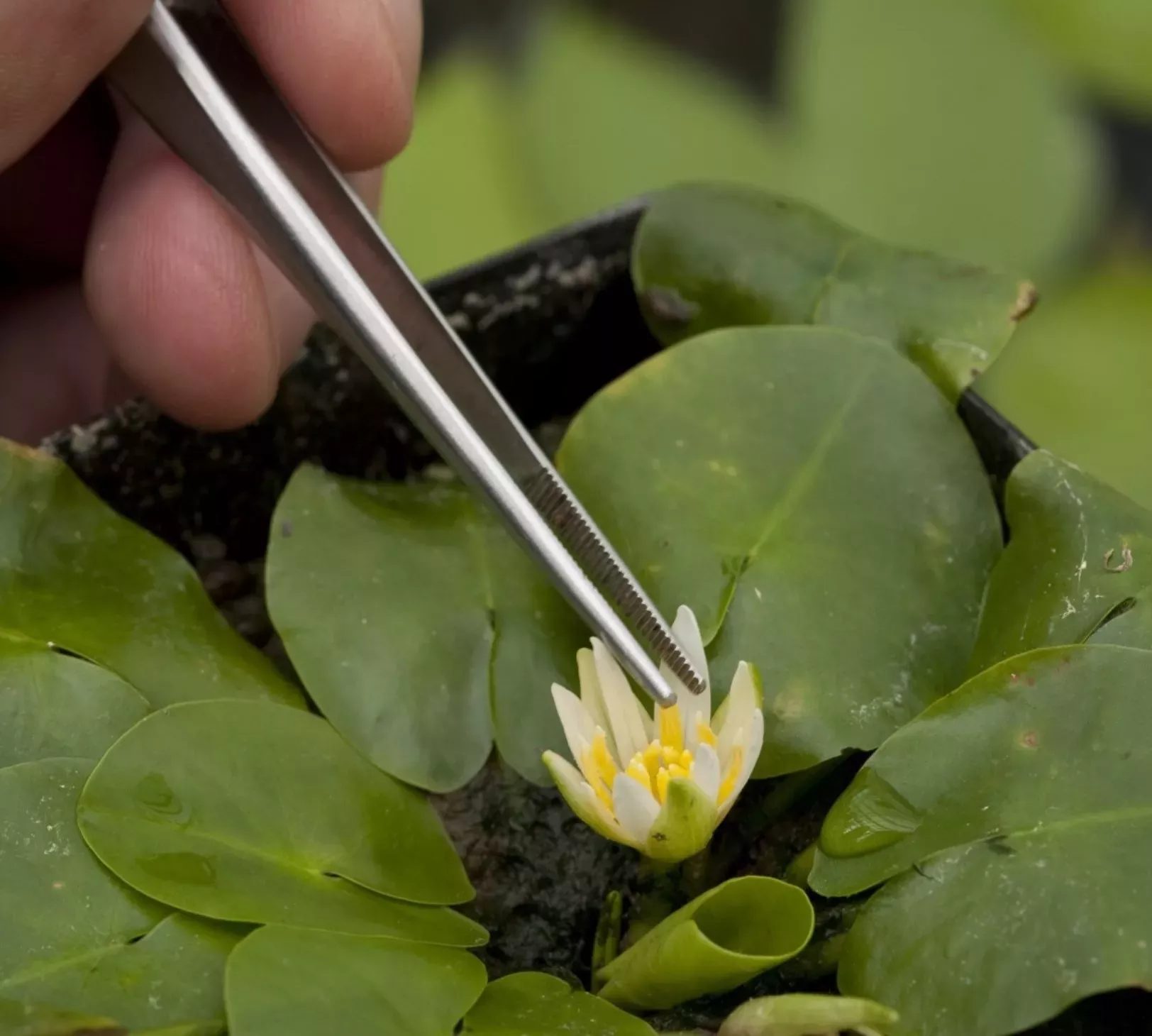
Climbers causing chaos
Some of our climbers get a little out of control, such as our bottle gourds (Lagenaria siceraria), bitter gourds (Momordica charantia) and luffa (Luffa cylindrica).
During growing season, they sometimes escape through gaps in the roof and start growing free outside the house.
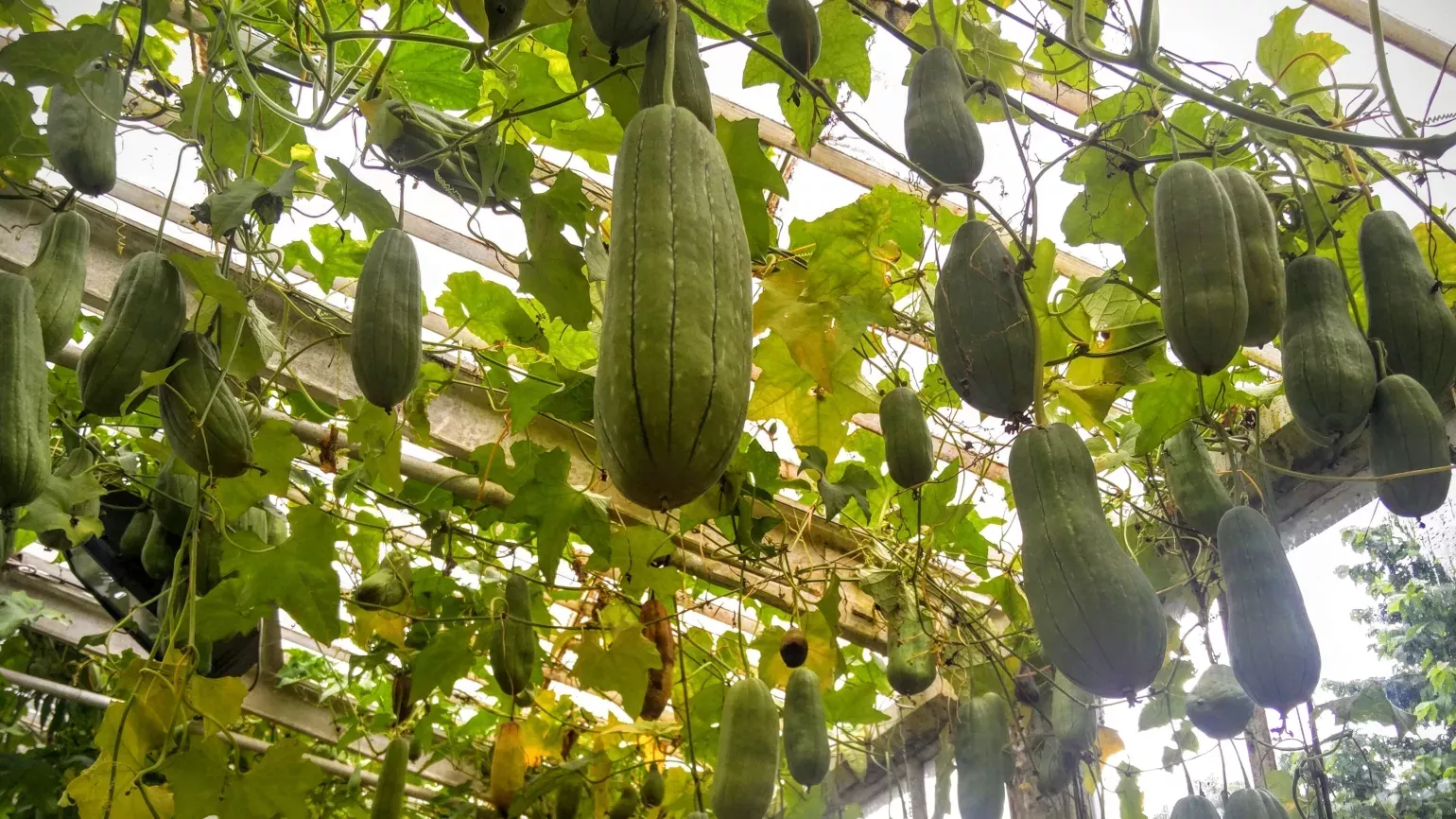
Tropical temperatures
The Waterlily House is the hottest and most humid glasshouse in the Gardens.
The minimum desired temperature inside is 20°C and is maintained by hot water pipes that run underneath the floor.
Measuring only 225 square metres, the small glasshouse heats up especially quickly when the weather is warm and sunny.
The large circular pond in the middle of the house creates the humidity level of around 75% RH. Hot water pipes encircling the pond heat the water to a warm 28°C – the ideal temperature for Victoria to thrive.
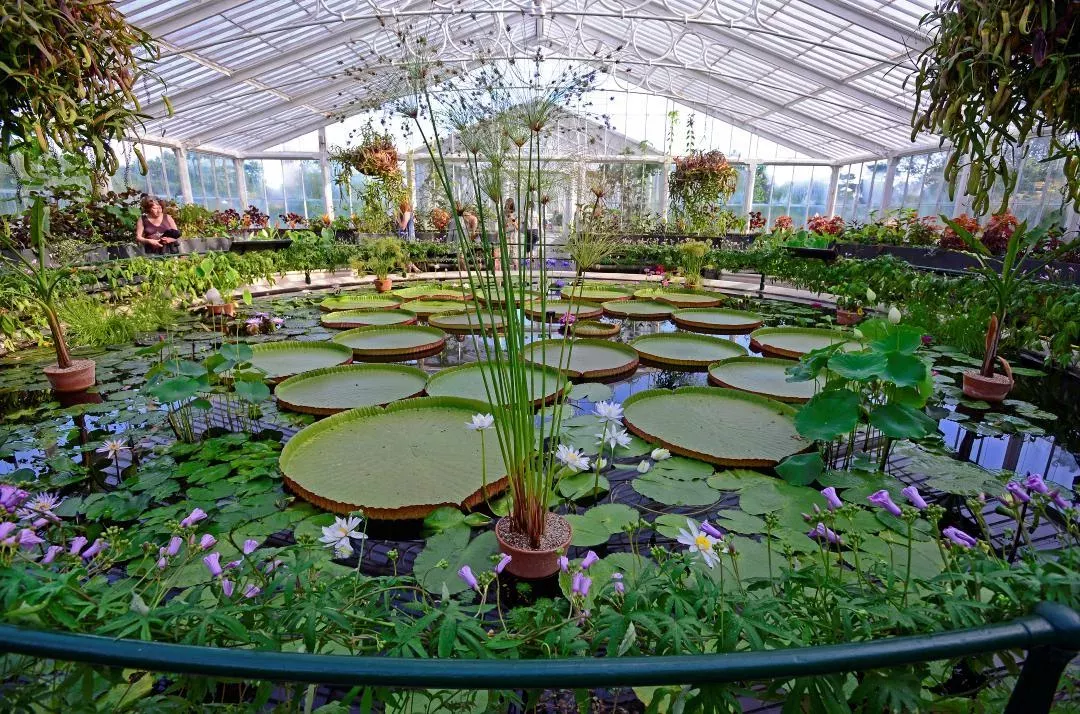
Animal guests
Chinese water dragons used to live in the glasshouse but were relocated to the Palm House where they get much more space to hide on trees.
Robins, blue tits and wrens sometimes get in through the vents and are found flying around inside.
Unique to Kew
The glasshouse is home to two ‘Kew-made’ Nymphaea waterlily hybrids, Nymphaea ‘Kew’s Stowaway Blues’ and ‘Kew’s Kabuki’. Both species are only displayed at Kew.
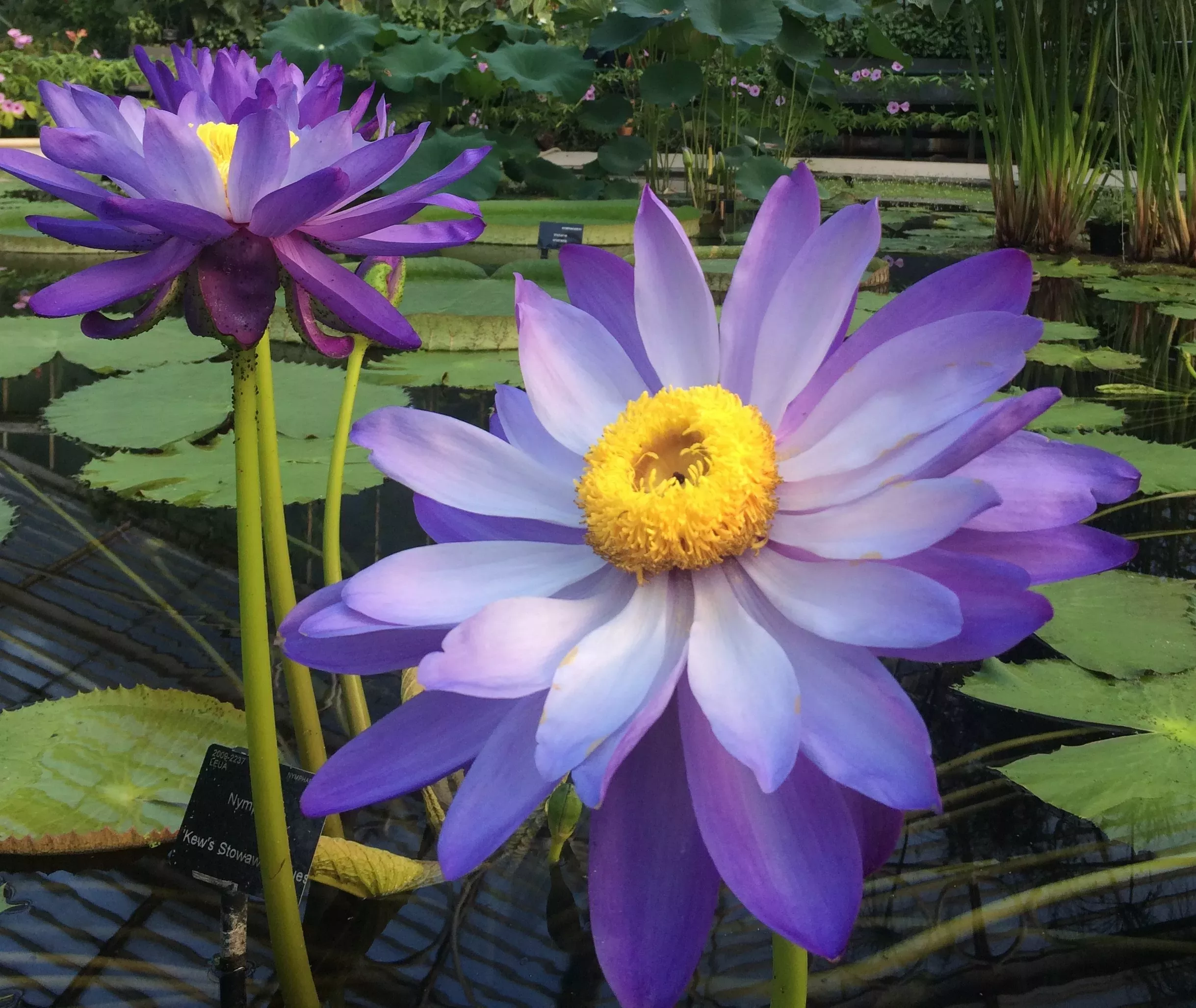
New to science
Nymphaea kimberleyensis, displayed for the first time in 2019 in the Waterlily House, is thought to be new to science. It is one of the largest flowered waterlilies in the world, with blooms up to 40 cm in diameter.
Pond proportions
The waterlily pond spans over 10 metres and holds around 12,000 gallons of water.
It's very shallow at only 45 cm deep on the outer part, sloping down to 65 cm near the centre.
A four-metre-wide section in the middle of the pond is 75 cm in depth. In the wild, waterlilies normally grow much deeper, but the shallowness of the pond makes it easier to access and work in.
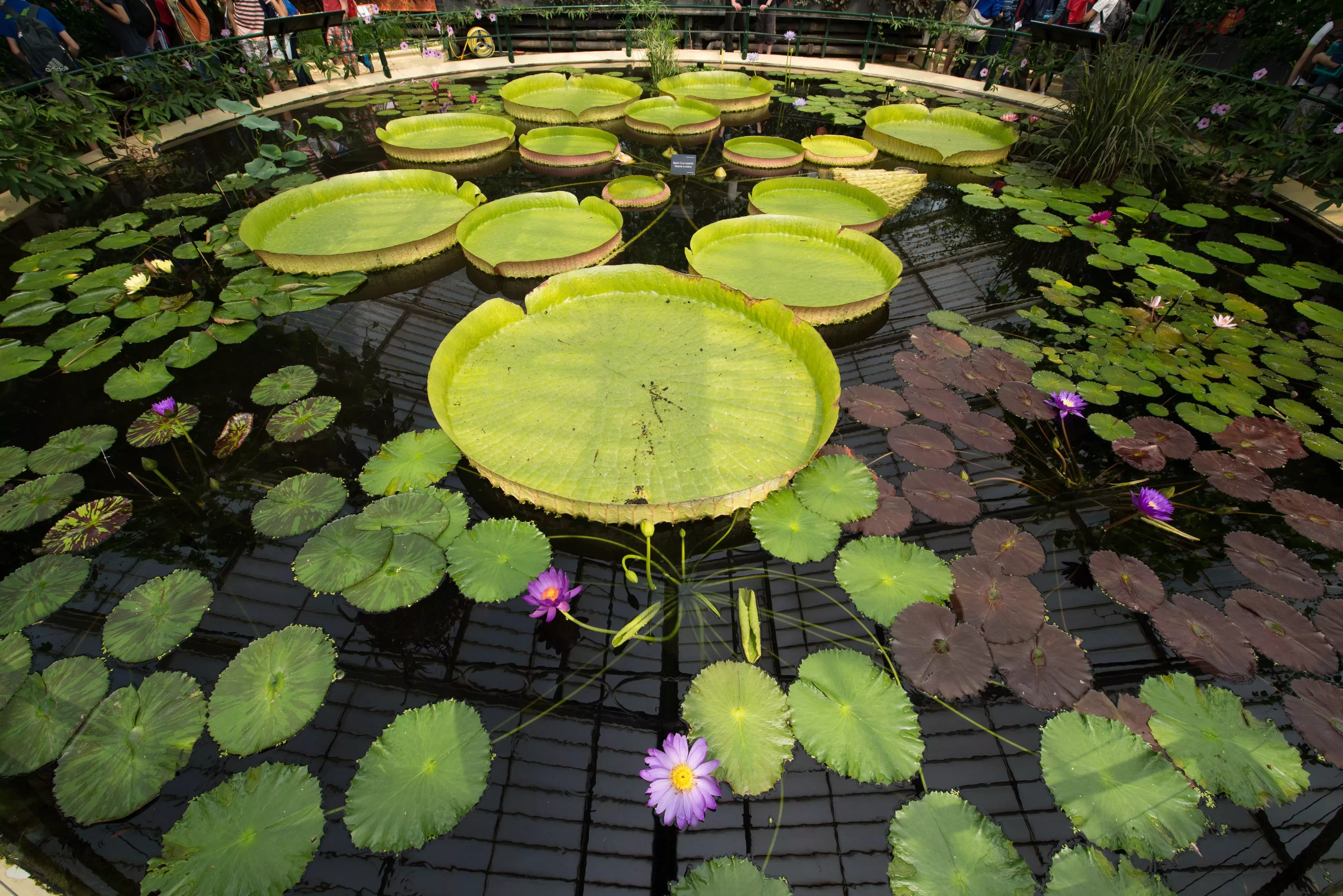
Black water trick
You may notice the water in the pond is inky black. That’s because it is dyed with a harmless vegetable food dye every week.
Not only does this create more dramatic reflections but also stops algae growth by blocking the light for photosynthesis.

Teamwork and tasks
We have a dedicated team of two who look after the glasshouse on a permanent basis, along with one student, one apprentice and a group of volunteers.
Jobs include watering and spraying the plants every morning, plant maintenance and pruning every three to four weeks.
Because of the hot humid conditions, all the plants grow quickly and need feeding once to twice a week.
The pond needs maintenance once a week, though in July and August this is increased to twice weekly. So the waders have to come out!
Dead leaves are removed to give space for new ones, the aquatic plants are fed with homemade feed bombs (a mixture of loam with nutrients from DAG and slow-release fertiliser), and algae is cleared away.
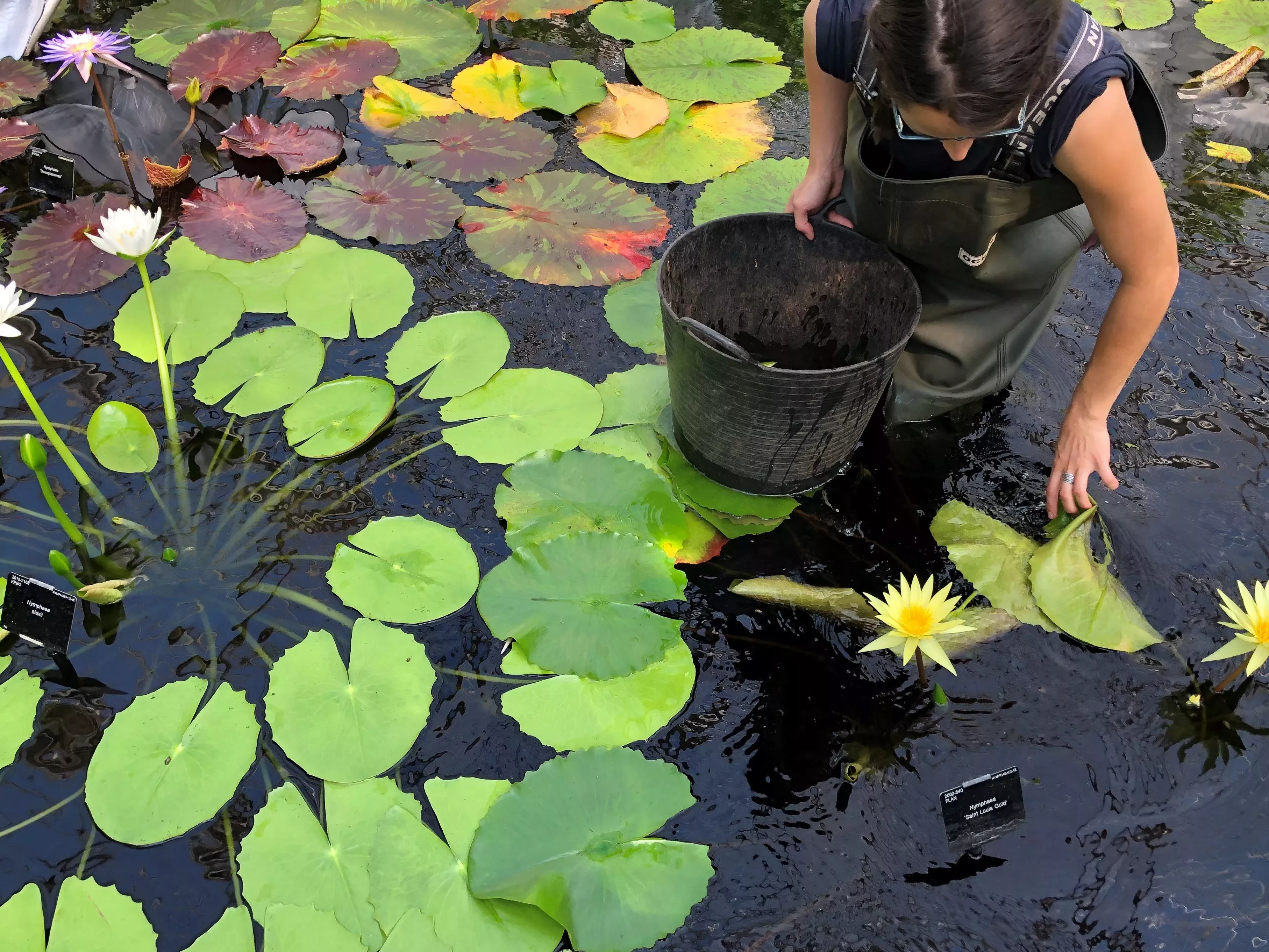
Aphid attack
Controlling aphids can be a challenge in the house. We try to use as few chemicals as possible and prefer biocontrol to manage pests.
So we have introduced small guppies into the pond as they eat the floating insects.
Winter shutdown
We completely empty and deep clean the Waterlily House every year, leaving the glasshouse closed during winter.
Due to the reduced light levels and cold temperatures outside, it’s too difficult to grow the tropical waterlilies.
But it gives us the perfect opportunity to refresh the plant display. The majority of the new plants are propagated from cuttings, a few from seed or tubers, and some plants are pruned and potted over winter in our Tropical Nursery.
During closure, the glass is cleaned, the metal structure is painted every two to three years, the pond edge is painted annually and the soil is replaced.
